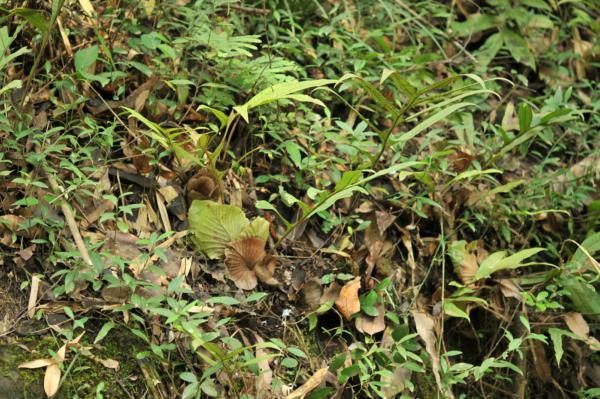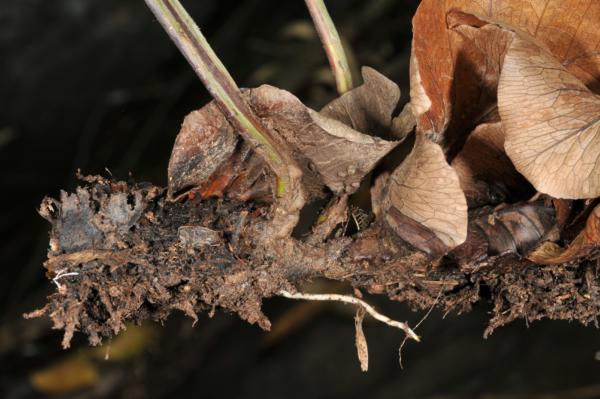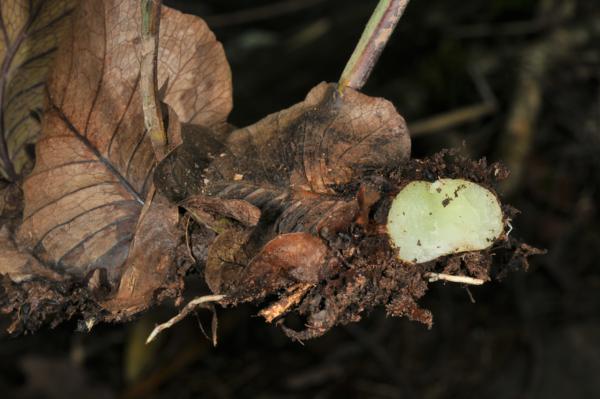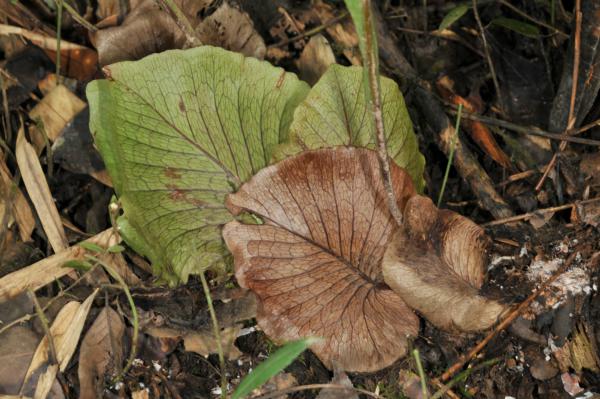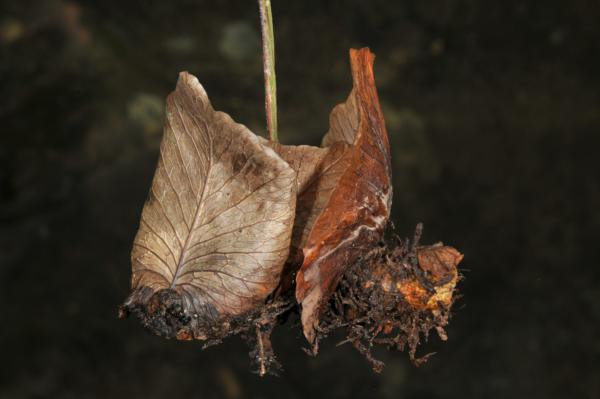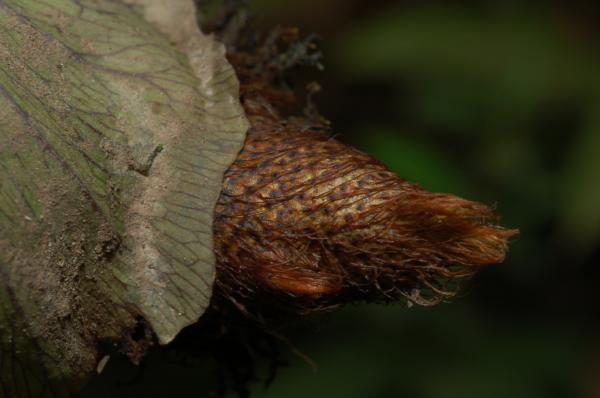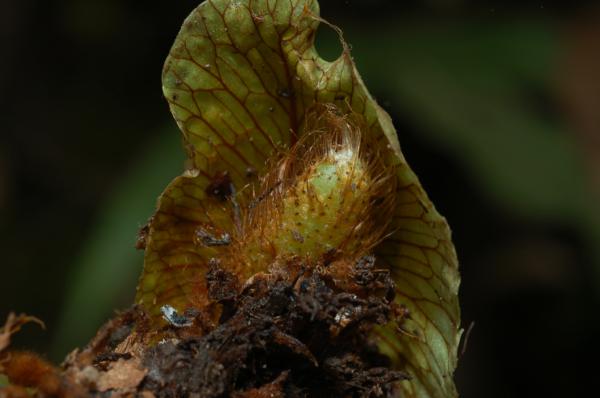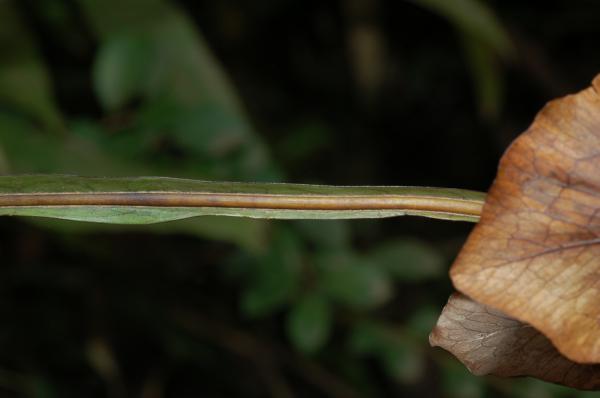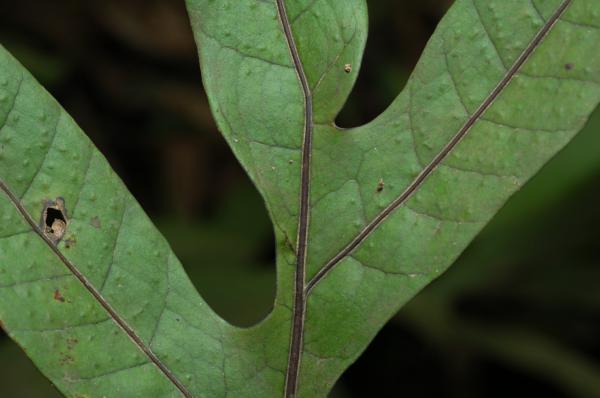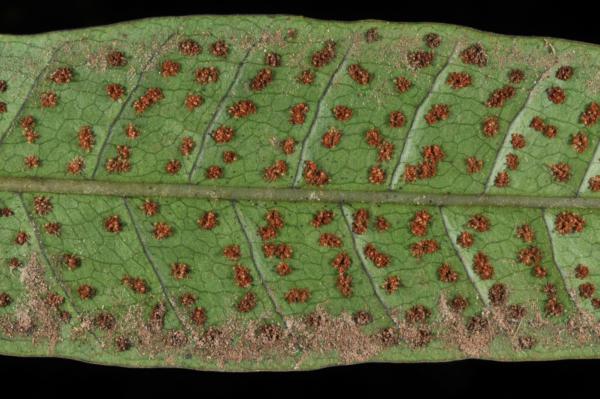
Drynaria bonii Christ
Etymology
Named after Henry Francois Bon who collected the type specimen of Drynaria bonii in Vietnam in 1886.
Family
Polypodiaceae
Nomenclature
Drynaria bonii Christ, Not. Syst. 1: 186. 1910; Tardieu & C.Chr., Fl. Indo-Chine 7(2): 517, f. 61. l & 61.2. 1941; Holttum, Dansk Bot. Ark. 20: 20. 1961; Holttum, Dansk Bot. Ark. 23: 231. 1965; Tagawa, J. Jap. Bot. 38: 329. 1963; Tagawa & K.Iwats., SouthE. Asian Stud. 5: 58. 1967; Tagawa & K.Iwats., Fl. Thailand 3: 545. 1989; Hovenkamp & Roos, Fl. Males., Ser. II, Ferns and Fern Allies 3: 36. 1998; Boonkerd & Pollawatn, Pterid. Thailand: 249, 268. 2000; Newman et al., Checkl. Vasc. Pl. Lao PDR: 29. 2007. – Type: Bon 3204 (P), Tonkin.
Description
Rhizome short creeping, tightly fixed on substrate, sometimes very flat, 1–2.5 cm wide, 3–5 mm thick, densely scaly; scales oval with long tails, peltate, round at base, up to 2.5 mm long with tails of about 2 mm in length, 1.5 mm broad, sharply toothed to fimbriate at margin, bi-coloured with black brown small central portion and brown margin. Nest-leaves many, imbricate, covering rhizome almost entirely, oval in outline, deeply cordate at base, subentire, 5–10 by 4.5–7 cm. Foliage-leaves: stipes stramineous, 10–25 cm long, narrowly winged almost to the base, scaly at base; laminae pinnatifid nearly to rachis, decurrent laminae less than 5 mm in breadth, 30–55 by 20–40 cm; lobes more or less ascending, oblanceolate or oblong-lanceolate, moderately acute to caudately acuminate, 10–22 by up to 3.8 cm, subentire, more or less narrowed towards base; veins distinct on both surfaces, finely anastomosing with 4–6 rows of areoles between main veins; chartaceous, light green, glabrous. Sori round or punctiform, in 2–4 irregular rows between main veins.
Distribution in Thailand
NORTHERN: Mae Hong Son, Chiang Mai, Chiang Rai, Lampang, Phrae, Tak, Phitsanulok; NORTH-EASTERN: Loei, Nong Khai; EASTERN: Chaiyaphum, Nakhon Ratchasima; SOUTH-WESTERN: Uthai Thani, Kanchanaburi, Prachuap Khiri Khan; CENTRAL: Sing Buri, Saraburi; SOUTH-EASTERN: Prachin Buri, Chon Buri.
Distribution in Laos
Champasak.
Distribution in Cambodia
Pursat, Siem Reap, Takeo
Wider Distribution
China (Guizhou) and Indochina.
Ecology
On dry or muddy rocks and tree trunks, rarely terrestrial, in light shade or in dense deciduous forests at low to medium altitudes, less than 1000 m, fairly common.
Proposed IUCN Conservation Assessment
Least Concern (LC). This species is widespread and not under any known threat.
Voucher specimens - Thailand
Middleton et al. 5133, Loei, Phu Suan Sai, Tat Huang waterfall (E).
Voucher specimens - Laos
Maxwell 98-877, Champasak (CMU)
Voucher specimens - Cambodia
Long et al. CL225, Siem Reap (P).
Habit
Rhizome
Cross section of rhizome
Young nest leaves
Old dry nest leaves
Scales
Growing tip and young scales
Stipe
Frond upper surface
Old Sori
Site hosted by the Royal Botanic Garden Edinburgh. Content managed by Stuart Lindsay, Gardens by the Bay, Singapore and David Middleton, Singapore Botanic Gardens. Last updated 24 January 2012
